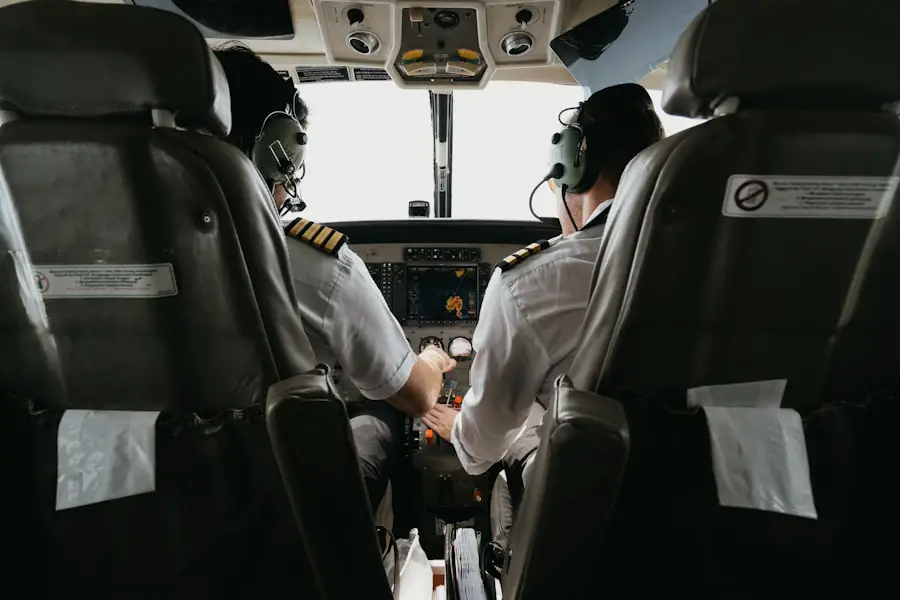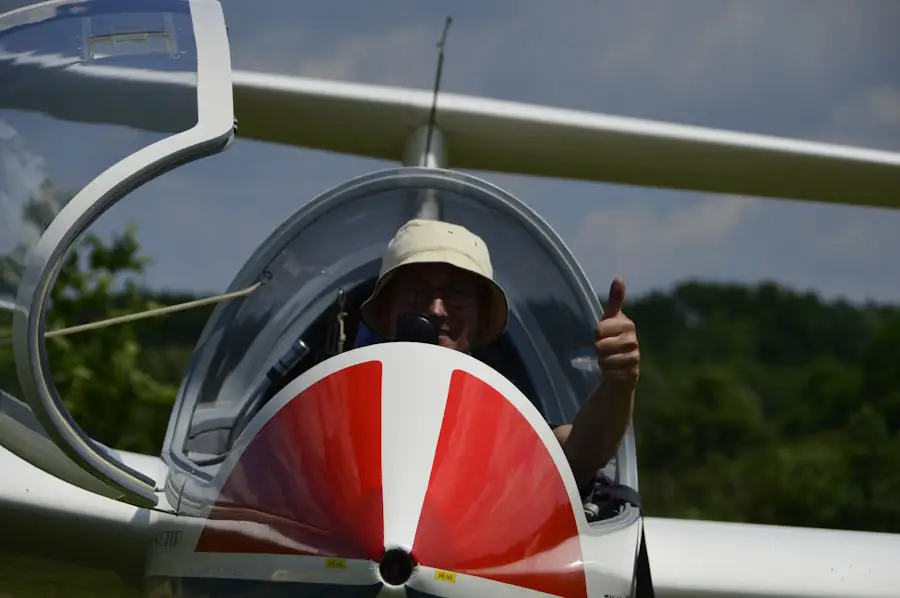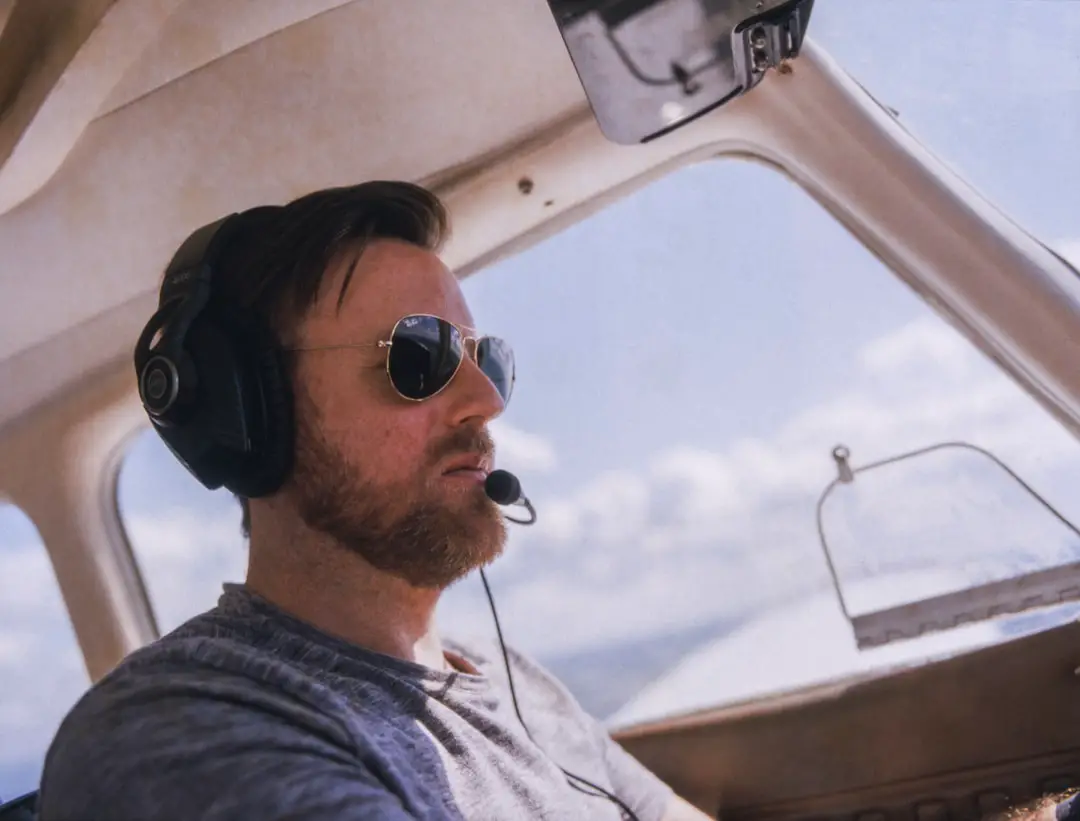The grooming standards for airline pilots have long been a topic of discussion and debate within the aviation industry. Traditionally, these standards have emphasized a clean-cut appearance, often mandating that pilots remain clean-shaven. However, as societal norms evolve and the workforce becomes more diverse, the conversation surrounding facial hair, particularly beards, has gained traction.
This article delves into the historical context of grooming standards for pilots, the reasons behind past restrictions on beards, and the shifting attitudes that are reshaping these policies today. It also examines safety concerns, current grooming standards, and the implications of these policies on diversity and inclusion within the industry.
Key Takeaways
- Airline pilot grooming standards have a long history and have evolved over time.
- Beards were banned in the past due to concerns about safety and professionalism.
- Attitudes towards beards in the airline industry have changed, with more acceptance in recent years.
- Safety concerns related to beards include interference with oxygen masks and facial hair preventing a proper seal with safety equipment.
- Current grooming standards for airline pilots often prohibit beards, although some airlines have started to allow them with certain conditions.
History of airline pilot grooming standards
The history of grooming standards for airline pilots can be traced back to the early days of commercial aviation. In the mid-20th century, airlines sought to project an image of professionalism and reliability, which was reflected in their pilots’ appearance. The archetype of a pilot was often characterized by a crisp uniform, polished shoes, and a clean-shaven face.
This image was not merely about aesthetics; it was also about instilling confidence in passengers who were entrusting their lives to these individuals. As air travel became more accessible and popular, airlines adopted strict grooming policies to maintain this image. Throughout the decades, these grooming standards remained largely unchanged, with many airlines enforcing rules that prohibited facial hair.
The rationale behind this was rooted in a desire for uniformity and professionalism. Pilots were expected to adhere to a specific standard that aligned with the airline’s branding and customer expectations. However, as societal norms began to shift in the late 20th and early 21st centuries, so too did the conversation around personal expression and grooming standards in various professions, including aviation.
Reasons for banning beards in the past

Historically, the ban on beards among airline pilots was often justified by concerns related to safety and hygiene.
One of the primary arguments against facial hair was its potential interference with the proper fit of oxygen masks.
In emergency situations where cabin pressure drops, pilots must rely on oxygen masks to ensure their safety and continued ability to operate the aircraft. A beard could create an inadequate seal between the mask and the face, potentially compromising its effectiveness. This concern was particularly pronounced in an industry where safety is paramount.
Additionally, there were perceptions that beards could detract from a pilot’s professional image. Airlines aimed to cultivate a specific brand identity that resonated with passengers, and a clean-shaven look was often seen as synonymous with professionalism and authority. The belief was that passengers would feel more secure flying with pilots who adhered to traditional grooming standards.
This perception was reinforced by media portrayals of pilots and the broader cultural context of masculinity during the 20th century, which often favored a clean-cut appearance.
Changing attitudes towards beards in the airline industry
| Year | Percentage of Airlines Allowing Beards | Percentage of Passengers Preferring Bearded Flight Crew |
|---|---|---|
| 2010 | 25% | 15% |
| 2015 | 40% | 25% |
| 2020 | 60% | 35% |
In recent years, attitudes toward facial hair in the airline industry have begun to shift significantly. As society becomes more accepting of diverse expressions of identity and personal style, many airlines are reevaluating their grooming policies. The rise of social media and changing cultural norms have contributed to a broader acceptance of beards in various professional settings.
This shift reflects a growing recognition that personal grooming choices do not necessarily correlate with an individual’s competence or professionalism. Moreover, younger generations entering the workforce tend to prioritize authenticity and self-expression over traditional norms. As millennials and Gen Z become more prominent in the aviation industry, their preferences are influencing corporate culture and policies.
Airlines are increasingly recognizing that allowing pilots to express themselves through facial hair can enhance employee morale and job satisfaction. This change is not merely cosmetic; it represents a broader movement toward inclusivity and acceptance within the workplace.
Safety concerns related to beards and facial hair
While changing attitudes toward beards are gaining traction, safety concerns remain a critical aspect of the discussion surrounding grooming standards for airline pilots. The primary issue revolves around the functionality of safety equipment, particularly oxygen masks. In emergency scenarios where rapid decompression occurs, an effective seal between the mask and the face is essential for delivering oxygen efficiently.
Beards can create gaps that may hinder this seal, potentially putting pilots at risk during critical moments.
Some manufacturers have developed masks with adjustable straps and improved sealing mechanisms that can work effectively even with beards.
This evolution in safety equipment raises questions about whether traditional grooming standards are still necessary or if they can be adapted to reflect contemporary realities while maintaining safety.
Current grooming standards for airline pilots

As of now, grooming standards for airline pilots vary significantly across different airlines and regions. While some airlines maintain strict policies prohibiting facial hair beyond mustaches, others have adopted more lenient approaches that allow for neatly trimmed beards. For instance, certain low-cost carriers have embraced a more relaxed attitude toward grooming standards as part of their branding strategy aimed at appealing to younger travelers.
In contrast, legacy carriers may still adhere to traditional grooming policies that emphasize a clean-shaven appearance. These differences highlight how individual airline cultures can shape grooming standards based on their target demographics and brand identities. As discussions around diversity and inclusion continue to evolve within the industry, it is likely that more airlines will reassess their grooming policies to align with contemporary values while ensuring safety remains a top priority.
Arguments for allowing beards in the airline industry
Proponents of allowing beards in the airline industry argue that permitting facial hair can enhance employee morale and foster a sense of individuality among pilots. Allowing pilots to express themselves through their appearance can lead to increased job satisfaction and retention rates. When employees feel comfortable being themselves at work, they are more likely to perform at their best, which ultimately benefits the airline as well.
Additionally, allowing beards can serve as a powerful statement about inclusivity within the aviation industry. Embracing diverse grooming styles can help attract a broader range of talent from various backgrounds, contributing to a more representative workforce. This inclusivity can enhance creativity and innovation within airlines as diverse perspectives come together to solve challenges and improve services.
Arguments against allowing beards in the airline industry
On the other hand, opponents of allowing beards in the airline industry often cite safety concerns as their primary argument. They contend that even with advancements in technology, there remains an inherent risk associated with facial hair during emergencies. The potential for compromised oxygen mask functionality cannot be entirely dismissed, especially in high-stress situations where every second counts.
Moreover, some argue that maintaining a uniform appearance is essential for upholding brand identity and passenger confidence. A clean-shaven look has long been associated with professionalism in aviation; thus, deviating from this standard could lead to mixed messages about an airline’s commitment to safety and reliability. For some airlines, particularly those with established reputations built on traditional values, maintaining strict grooming standards may be seen as crucial for preserving their brand image.
Examples of airlines with different policies on facial hair
The diversity of policies regarding facial hair among airlines illustrates how varied approaches can be within the industry. For instance, British Airways has historically maintained strict grooming standards that require pilots to be clean-shaven or have neatly trimmed mustaches. This policy aligns with their commitment to projecting a professional image consistent with their brand identity.
Conversely, airlines like EasyJet have adopted more relaxed grooming standards that allow for neatly trimmed beards as part of their effort to appeal to younger travelers seeking authenticity in their travel experiences. Similarly, JetBlue has embraced a more inclusive approach by permitting facial hair while emphasizing that it must remain well-groomed and not interfere with safety equipment. These contrasting policies reflect how different airlines prioritize various aspects of their operations—whether it be brand image or employee satisfaction—while navigating the complexities of grooming standards in an evolving industry landscape.
Potential impact on diversity and inclusion in the industry
The conversation surrounding grooming standards in aviation has significant implications for diversity and inclusion within the industry. As airlines reconsider their policies on facial hair, they have an opportunity to create a more welcoming environment for individuals from diverse backgrounds who may view personal grooming as an expression of cultural identity or personal style. By allowing beards and other forms of self-expression, airlines can attract talent from underrepresented communities who may have previously felt excluded due to rigid grooming standards.
This shift not only enhances diversity within pilot ranks but also fosters an inclusive culture where employees feel valued for who they are rather than conforming to outdated norms. Furthermore, embracing diverse grooming styles can positively impact customer perceptions as well. Passengers are increasingly seeking brands that reflect their values; thus, airlines that prioritize inclusivity may resonate more strongly with modern travelers who appreciate authenticity in their interactions.
Conclusion and potential future changes in grooming standards
As discussions around grooming standards continue to evolve within the airline industry, it is clear that change is on the horizon. The historical context surrounding pilot grooming has been shaped by safety concerns and traditional notions of professionalism; however, shifting societal attitudes toward personal expression are prompting many airlines to reevaluate these policies. The future may see a more nuanced approach where safety remains paramount while allowing for greater flexibility in personal grooming choices among pilots.
As technology advances and cultural norms shift further toward inclusivity, it is likely that we will witness a gradual transformation in how airlines define professionalism—one that embraces individuality without compromising safety or operational integrity. Ultimately, this ongoing dialogue reflects broader societal changes regarding identity and self-expression across various professions—not just aviation—and serves as a reminder that progress often requires challenging established norms in pursuit of a more inclusive future.
If you’re wondering about the grooming requirements for airline pilots, you may want to check out this article on the best travel razor. Keeping a clean-shaven look is often a requirement for pilots due to the need for a proper seal with oxygen masks in case of emergency. However, some airlines have recently relaxed their policies on facial hair, allowing pilots to have well-groomed beards. This change in regulations has sparked a debate within the aviation industry about the safety implications of allowing pilots to have facial hair.
FAQs
Can airline pilots have beards?
Yes, airline pilots are allowed to have beards, but there are certain restrictions and guidelines that must be followed.
What are the restrictions for airline pilots with beards?
The restrictions for airline pilots with beards vary depending on the airline and the country’s aviation regulations. In general, beards must be neatly trimmed and maintained to a certain length.
Are there any specific guidelines for airline pilots with beards?
Some airlines may have specific guidelines regarding the length and style of beards for their pilots. It is important for pilots to familiarize themselves with their airline’s grooming policies.
Do airline pilots need to get approval for their beards?
In some cases, airline pilots may need to get approval from their airline’s management or the aviation authority in their country before growing a beard. It is best to check with the airline’s policies and regulations.
Are there any safety concerns related to airline pilots having beards?
There are potential safety concerns related to wearing oxygen masks and facial hair. Beards that interfere with the proper seal of an oxygen mask may be prohibited for safety reasons.
Can airline pilots with beards still wear a respirator in case of emergency?
Pilots with beards may face challenges in obtaining a proper seal with a respirator in case of emergency. It is important for pilots to be aware of the potential limitations and safety implications of wearing a respirator with a beard.
